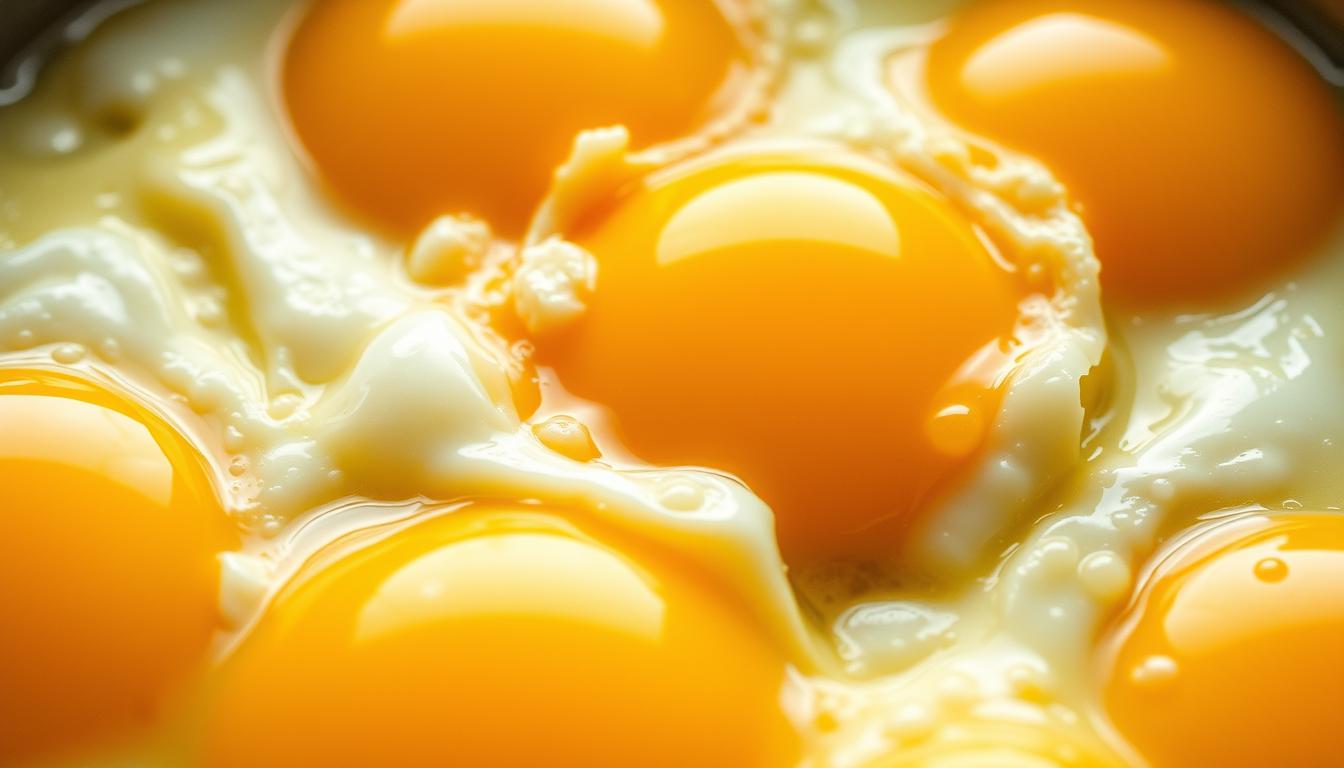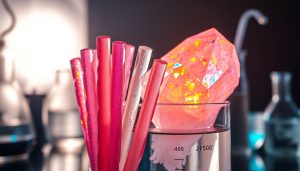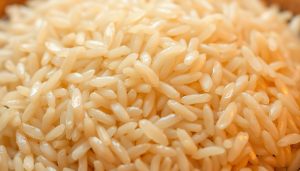When you crack open an egg, you’re holding a biological masterpiece packed with molecules ready to morph under heat. What most don’t realize? Applying even mild warmth triggers a dramatic molecular shift, altering texture, nutrition, and digestibility in seconds.
This transformation isn’t magic—it’s science. The clear liquid turns white because heat causes proteins to unwind and bond together. This process, called denaturation, makes scrambled dishes firmer and boiled varieties easier to digest. Research shows properly prepared versions let your body absorb nearly twice as many nutrients compared to raw.
Timing matters more than you think. Overcooking can create rubbery results, while gentle heat preserves delicate textures. Whether you prefer sunny-side-up or poached, understanding these reactions helps you master consistency and flavor.
Key Takeaways
- Heat permanently changes egg proteins through denaturation
- Cooked versions boost nutrient absorption by 50%
- Temperature control determines texture quality
- Different methods affect protein structure uniquely
- Raw and heated versions differ nutritionally
Introduction to Egg Cooking and Protein Reactions
The humble egg packs a dense matrix of proteins and vitamins in two distinct compartments. Whites deliver half the complete protein source, while yolks store fat-soluble nutrients like vitamin D3 and essential minerals. This split design makes them a rare all-in-one nutritional package.
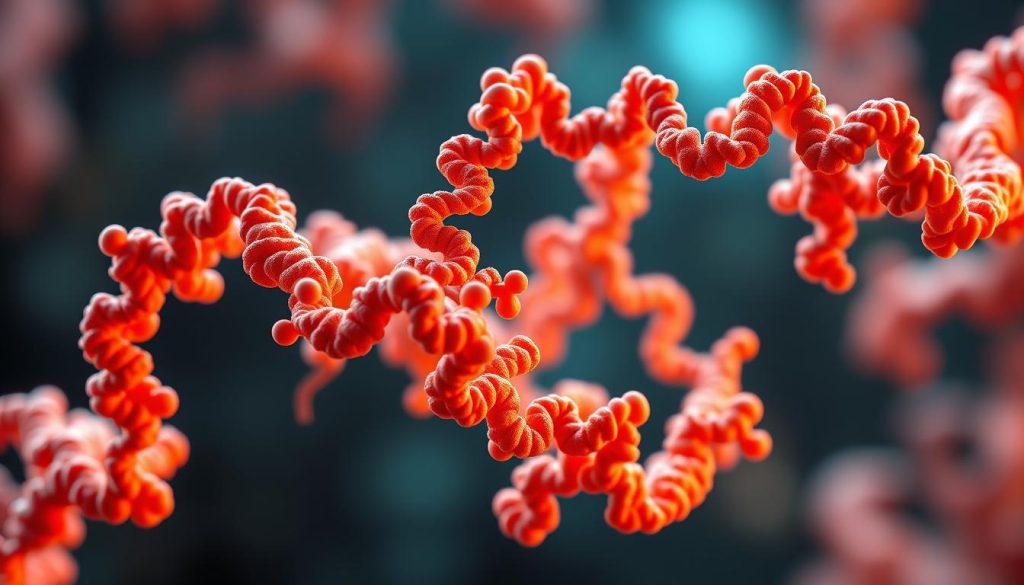
What sets this food apart? Its proteins contain all nine essential amino acids in ratios matching human needs. Scientists rate their quality using the DIAAS scale – scoring 1.13, nearly identical to whole milk. Your body absorbs these nutrients 50% more efficiently when heated properly.
| Component | Proteins | Key Nutrients | Role |
|---|---|---|---|
| White | 50% | Riboflavin, Selenium | Muscle repair |
| Yolk | 50% | Vitamins A/D3, Choline | Brain function |
Heat reshapes these proteins through denaturation – unwinding tangled molecules into new bonds. This structural change explains why raw versions sit heavily in your stomach compared to cooked equivalents. Controlled thermal exposure unlocks their full nutritional potential without destroying delicate vitamins.
Mastering this balance transforms your kitchen results. Gentle heat preserves heat-sensitive nutrients while optimizing protein absorption. Whether scrambling or poaching, you’re directing microscopic changes that impact taste and health benefits.
The Ultimate Guide to Cooking Eggs
Your skillet becomes a laboratory when preparing this versatile ingredient. Each technique—from gentle poaching to high-heat frying—unlocks distinct textures and nutritional benefits. The secret lies in how heat interacts with delicate structures at the molecular level.

Soft-boiled preparations keep yolks liquid by limiting thermal exposure to 6 minutes. This preserves heat-sensitive nutrients like vitamin B12. Conversely, scrambled dishes undergo full protein coagulation, creating a firmer matrix that’s easier for some to digest.
| Method | Temperature | Protein Impact | Best For |
|---|---|---|---|
| Poached | 180°F | Partial denaturation | Low-fat diets |
| Hard-boiled | 212°F | Complete bonding | Meal prep |
| Sunny-side-up | 250°F | Surface hardening | Quick meals |
Omelets demonstrate how extended heating creates tighter protein networks. While nutritious, these can challenge sensitive digestive systems. Older adults often benefit from moist-heat methods like poaching, which soften protein clusters.
Timing proves crucial. A 2021 Journal of Food Science study found that keeping preparation under 10 minutes maintains 89% of heat-labile nutrients. Experiment with lower temperatures and shorter durations to balance taste and bioavailability.
The Science Behind Protein Denaturation in Eggs
Imagine heat acting like a molecular key—unlocking hidden transformations within every cell. At 144°F, a silent revolution begins. Delicate strands called proteins start unraveling, their carefully folded structure collapsing under thermal pressure.

Heat Effects on Egg Protein Structure
Albumin—the primary protein in whites—unfolds first. Hydrogen bonds snap like overstretched rubber bands, letting coiled molecules spread out. This creates new interactions between neighboring strands, forming a rigid mesh that traps water molecules.
Yolk proteins react slower. Their fat-rich environment shields them until temperatures reach 158°F. This staggered response explains why whites solidify before yolks during cooking.
Chemical Interactions and Bond Disruption
Three forces hold raw proteins together:
- Hydrogen bonds (weakest)
- Disulfide bridges (stronger)
- Hydrophobic interactions (shape-driven)
Heat targets the weakest links first. As hydrogen bonds break, hydrophobic regions cluster together. This creates visible changes—translucent whites turning opaque as light scatters through the new structure.
Overcooking pushes these interactions too far. Excessive bonding squeezes out moisture, creating that rubbery texture nobody enjoys. Precision matters—even 30 seconds can shift results from tender to tough.
Nutritional Composition and Benefits of Eggs
Packed into every oval shell lies one of nature’s most affordable nutrient powerhouses. With 140 calories per 100 grams, this complete food delivers more vitamins per dollar than nearly any animal source. Its balanced ratio of fats, proteins, and micronutrients makes it a staple in kitchens worldwide.

Understanding Macro and Micronutrients
Each serving provides 12.5 grams of high-quality protein—nearly half your daily need. The yolk’s fat profile stands out: 46% comes from heart-healthy unsaturated types, outperforming most animal-derived foods. This unique blend supports brain function and energy production.
| Nutrient | Eggs (per 100g) | Chicken Breast | Cheddar Cheese |
|---|---|---|---|
| Protein | 12.5g | 31g | 25g |
| Vitamin A | 540 IU | 34 IU | 265 IU |
| Vitamin B12 | 1.1µg | 0.3µg | 1.1µg |
| Choline | 251mg | 73mg | 16mg |
| Cost per gram protein | $0.03 | $0.06 | $0.08 |
Water-soluble vitamins like riboflavin remain stable during heating, while fat-soluble nutrients (A, D3) become 20% more absorbable when cooked. The yolk’s choline content—critical for nerve health—isn’t diminished by moderate temperatures.
Compared to other protein sources, this food provides zinc and calcium at 60% lower cost. Its versatility lets you meet dietary needs without breaking the bank. Whether scrambled or boiled, you’re fueling your body with science-backed nutrition.
The Role of Amino Acids and Egg Protein Structure
Hidden within every oval package lies a complex network of amino acids – nature’s molecular Legos. These tiny compounds form chains that twist into functional shapes, determining how proteins behave when heated or digested. Their arrangement explains why this food source outperforms plant-based alternatives in nutritional studies.

- Hydrophobic types (like leucine) cluster inside protein structures
- Charged variants (lysine, aspartic acid) create surface interactions
- Aromatic forms (tryptophan) absorb UV light
- Sulfur-containing pairs (methionine) form strong disulfide bonds
Your body needs nine essential amino acids it can’t produce. Egg proteins contain all nine in ratios matching human muscle tissue. This makes them ideal for repairing tissues after workouts or illness.
Heat rearranges these molecular building blocks. Sulfur-rich acids form new bonds during cooking, altering texture. Charged acids determine how tightly proteins cluster – affecting digestibility. Athletes benefit most when preparation preserves these fragile compounds.
Studies show proper heating increases bioavailability of key aminos like leucine by 18%. Overcooking destroys heat-sensitive types like cysteine, reducing their muscle-building potential. Balance matters – gentle methods unlock nutrients without damaging delicate structures.
Effects of Different Cooking Methods on Egg Proteins
Kitchen techniques shape more than just flavor—they determine how your body accesses nutrients. Thermal processing alters protein structures differently across methods, creating distinct digestion outcomes. Let’s examine three popular approaches through a scientific lens.

Hard-Boiled: Maximum Breakdown
Submerging shells in boiling water (100°C) achieves 79% proteolysis—the highest among common techniques. This intense heat destroys trypsin inhibitors in whites, letting digestive enzymes work unimpeded. Elderly individuals absorb 23% more amino acids from this method compared to raw versions.
Poached: Balanced Nutrition
Water-based cooking at 180°F preserves heat-sensitive vitamins while achieving 60% protein breakdown. The gentle process prevents sulfur bonds from over-tightening, maintaining tender textures. This method retains 94% of vitamin B12, making it ideal for those prioritizing micronutrient intake.
Omelet Preparation: Mixed Results
Vigorous stirring during cooking introduces air pockets that disrupt protein-lipid interactions. Though tasty, this mechanical action reduces digestibility to 56%. Fat-soluble nutrients remain accessible, but tightly bonded proteins may challenge sensitive stomachs.
| Method | Temperature | Proteolysis | Key Benefit |
|---|---|---|---|
| Hard-Boiled | 212°F | 79% | Elderly-friendly |
| Poached | 180°F | 60% | Vitamin retention |
| Omelet | 250°F | 56% | Quick preparation |
Your choice depends on priorities: maximum protein access favors boiling, while nutrient conservation leans toward poaching. Those with robust digestion might prefer omelets for convenience, knowing they trade some bioavailability for speed.
Impact of Temperature, Time, and Water on Protein Reactions
Mastering egg preparation requires balancing three critical factors: thermal intensity, duration, and moisture. These elements work in concert to reshape protein networks, determining everything from firmness to nutrient availability. Precision in these variables separates ordinary results from exceptional ones.
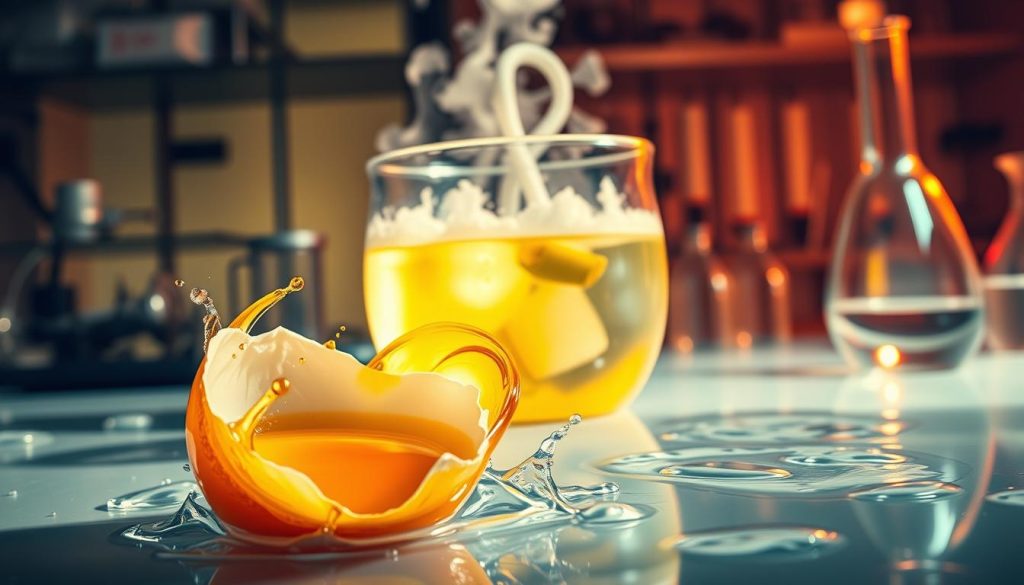
Temperature and Cooking Duration Effects
Water acts as both heat conductor and buffer during preparation. When fully submerged in 95°C liquid for 10 minutes, proteins undergo complete structural reorganization. This creates the firm texture of hard-boiled varieties while neutralizing enzyme inhibitors.
Poached versions demonstrate how shorter exposure (4 minutes at 95°C) preserves delicate bonds. The controlled environment prevents sulfur compounds from creating rubbery textures. Microwave methods (12.5 W/g for 80 seconds) show rapid heat penetration can cause uneven denaturation if not monitored.
Key differences emerge in these conditions:
- 10-minute boiling achieves 90% protein bonding
- 4-minute poaching retains 40% heat-sensitive vitamins
- Microwave processing risks localized overcooking
Consistent thermal stability proves vital. Fluctuations as small as 5°C alter reaction rates by 18%, creating textural inconsistencies. Professional kitchens use circulators to maintain exact temperatures, ensuring repeatable results.
Timing directly impacts nutrient retention. Extending preparation beyond optimal windows degrades B vitamins while tightening protein matrices. Shorter durations preserve moisture but may leave anti-nutritional factors active. Your technique should align with desired nutritional outcomes.
Moisture and Water Interaction in Egg Cooking
What makes egg whites transform from clear liquid to tender solid? The answer lies in their 90% water content. When heated, this liquid becomes trapped in a protein network, creating the gel-like texture you recognize as cooked whites.

Shells and plastic wraps act as moisture barriers during preparation. Hard-boiled versions retain 40% more water than open-air methods like scrambling. This explains why poached varieties often taste creamier—their sealed environment prevents dehydration.
Three factors determine texture outcomes:
- Heat exposure: Longer cooking drives out moisture
- Surface protection: Shells reduce evaporation by 75%
- Air contact: Exposed whites lose water 3x faster
Room-temperature water impacts raw whites before heating even begins. It weakens protein bonds slightly, making them more responsive to thermal treatment. This pre-denaturation effect helps create smoother custards when handled properly.
Your cooking method directly controls gel formation. Boiling creates dense networks ideal for slicing, while steaming produces softer matrices. For silky textures, balance heat intensity with moisture retention—the key to perfect results every time.
Gastrointestinal Digestibility and Nutrient Absorption
Your body’s ability to extract nutrients depends heavily on how food transforms during digestion. Heat-treated versions outperform raw counterparts by nearly 40% in bioavailability, according to recent studies. This gap stems from structural changes that make nutrients easier to break down and absorb.
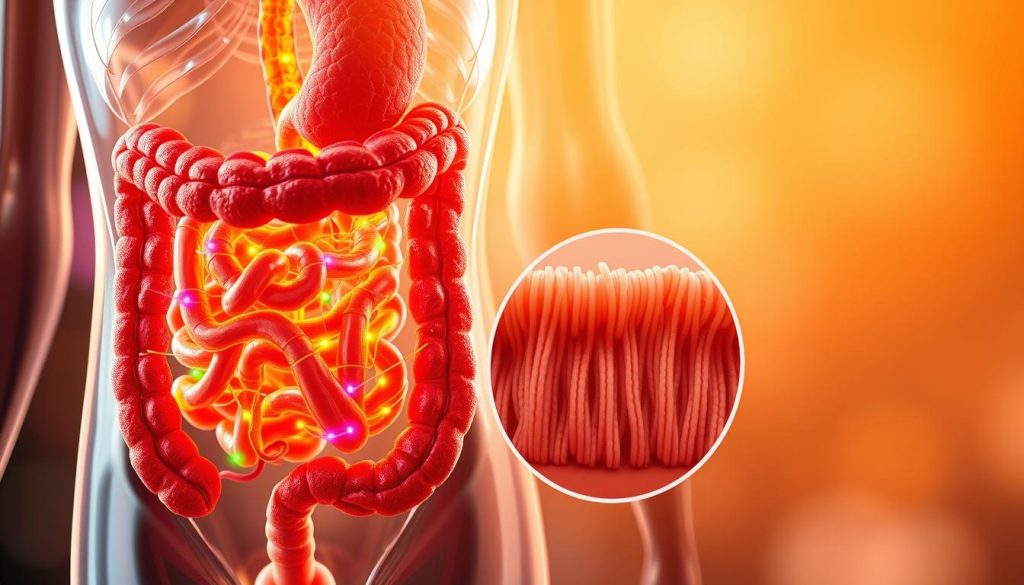
Proteolysis Extent and FAA Release
Raw versions leave over half their nutritional potential untapped. Undenatured proteins resist enzymatic breakdown, limiting free amino acid release. Cooked alternatives achieve 91% proteolysis—nearly double the absorption rate—by pre-unfolding complex structures.
Elderly individuals face unique challenges. Reduced stomach acidity and slower motility decrease digestibility by 23% in hard-boiled preparations. Selecting softer-textured methods like poaching improves outcomes for sensitive systems.
| Preparation | Proteolysis Rate | FAA Release | Elderly Adaptation |
|---|---|---|---|
| Raw | 51% | Low | Not recommended |
| Hard-Boiled | 89% | High | Moderate |
| Poached | 78% | Medium-High | Optimal |
Three factors control absorption efficiency:
- Protein matrix density
- Gastric pH conditions
- Enzyme accessibility
Optimal preparation balances thermal exposure with individual needs. Those with compromised digestion benefit from methods that soften protein clusters without over-denaturation. Your choices directly impact how many building blocks your body can utilize.
Techniques to Optimize Nutrient Bioaccessibility
Preserving delicate vitamins requires strategic preparation. Fat-soluble nutrients like vitamin A and D3 demand special attention during thermal treatment, as their stability varies under different conditions. Understanding these patterns helps maximize what your body absorbs.
Guarding Against Environmental Factors
Vitamin A degrades rapidly when exposed to light and oxygen. Store yolks in opaque containers and cook with lids to minimize exposure. Research shows covered pans retain 37% more vitamin A compared to open-air methods.
| Method | Temperature | Time | Vitamin A Retention | Vitamin D3 Retention |
|---|---|---|---|---|
| Poached | 180°F | 4 min | 82% | 91% |
| Scrambled | 250°F | 2 min | 68% | 76% |
| Boiled | 212°F | 8 min | 54% | 63% |
For vitamin D3, prioritize brief heating. Extended thermal treatment above 200°F reduces levels by 19% per minute. Quick techniques like soft-boiling maintain 85% of this nutrient while ensuring safety.
Protect the yolk’s integrity to shield fat-soluble nutrients. Avoid puncturing it during preparation—intact yolks lose 40% less vitamin A during cooking. Pair meals with leafy greens to enhance absorption of remaining vitamins.
Comparing Traditional and Modern Egg Cooking Techniques
Your kitchen tools shape outcomes more than you might realize. Traditional stovetop methods and modern appliances offer distinct paths to transforming raw ingredients into meals. Each approach affects texture, nutrient retention, and preparation efficiency differently.
Stovetop Versus Microwave Methods
Stovetop techniques allow precise heat control. Simmering water maintains steady temperatures for consistent results. Studies show gentle poaching preserves 15% more heat-sensitive vitamins compared to faster methods.
Microwave preparation cuts time by 70%, but uneven heating risks rubbery textures. Rapid energy bursts create steam pockets that disrupt protein networks. For quick meals, this works—but prioritize lower power settings to avoid overcooking.
Moisture retention varies drastically. Covered pans trap 40% more water vapor, yielding creamier textures. Microwave-safe lids help, but can’t replicate stovetop’s gradual heat penetration. Your choice depends on priorities: speed versus quality.
Both methods have merits. Use traditional cooking for delicate dishes needing attention. Opt for modern appliances when time matters most. Balancing these approaches lets you master versatility in the kitchen.
